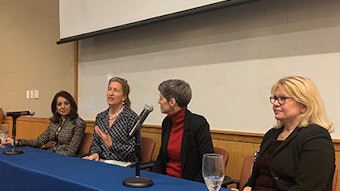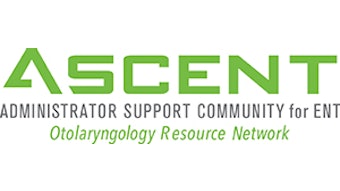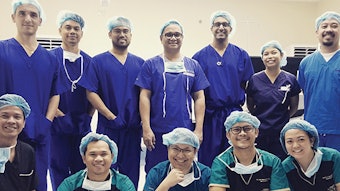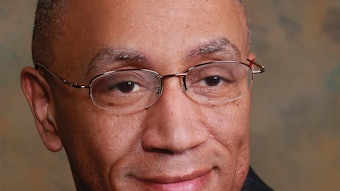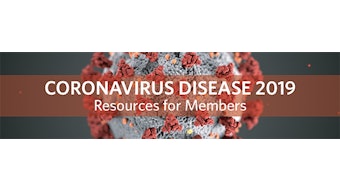Transition to In-office Treatments: Ménière’s Disease
Given the benefits of improved healthcare access, decreased cost, avoidance of anesthetic risk, and improved patient safety, many procedural specialties have embraced the trend of transitioning operating room-based treatments to in-office procedures. In contrast to some other otolaryngology subspecialties, the evolution of in-office procedures for the otologist has advanced more slowly.
Varun V. Varadarajan, MD, and Oliver F. Adunka, MD, Chair of the AAO-HNS Hearing Committee
Given the benefits of improved healthcare access, decreased cost, avoidance of anesthetic risk, and improved patient safety, many procedural specialties have embraced the trend of transitioning operating room-based treatments to in-office procedures. In contrast to some other otolaryngology subspecialties, the evolution of in-office procedures for the otologist has advanced more slowly. More specifically, many modern in-office otologic procedures are similar to those performed in the early days of the specialty; common procedures include myringotomy, tympanostomy tube placement, cerumen disimpaction, mastoid debridement, myringoplasty, minor otoendoscopic procedures, and transtympanic injections. Peripheral vestibular disorders, such as benign paroxysmal position vertigo, superior semicircular canal dehiscence, and Ménière’s disease, are typically managed conservatively until medically refractory disease necessitates procedural intervention. The treatment of Ménière’s disease, however, has a unique history and evolved over time from early surgical intervention to predominantly outpatient and in-office management.
Ménière’s disease is a clinical condition defined by spontaneous vertigo attacks (each lasting 20 minutes to 12 hours) with documented low- to mid-frequency sensorineural hearing loss (SNHL) in the affected ear before, during, or after one of the episodes of vertigo. It also presents with fluctuating aural symptoms (hearing loss, tinnitus, or ear fullness) in the affected ear.1 The evaluation and management contribute to the significant economic burden of Ménière’s disease. This is due to diagnostic testing (e.g., imaging, vestibular testing, electrocochleography), procedural interventions, frequent office visits, and auditory rehabilitation.2 Treatments aim to reduce the frequency and severity of attacks as well as restore hearing in late-stage disease; patients are counseled on both ablative and non-ablative procedures with regard to hearing preservation. In the mid-20th century, vestibular nerve sectioning, labyrinthectomy, and endolymphatic sac procedures were commonly performed, as techniques improved in safety with the availability of the operating microscope. In the late 20th and 21st centuries, the management of Ménière’s disease experienced a transition from invasive surgical interventions to largely outpatient and in-office treatments. This shift in practice is attributable to a large armamentarium of conservative interventions such as lifestyle modification (trigger identification, stress reduction), dietary modification (e.g., sodium, caffeine, alcohol restriction), and pharmacologic therapy (e.g., diuretics, betahistine). The increasing evidence of an immunomodulatory link between allergies and Ménière’s disease has encouraged control of allergen exposure and potentially utilizing immunotherapy as an avenue for trigger management. Most significantly, the widespread use of transtympanic injections has allowed patients to undergo a relatively low-risk, short-duration in-office procedure before considering surgical interventions requiring general anesthesia or inpatient hospitalization.
Transtympanic steroid and gentamicin injections were recently reported to be the most common procedure performed for Ménière’s disease in the United States.3 Transtympanic steroid injections serve as a non-ablative option for attempting to control vertigo episodes as well as to treat SNHL. Chemical labyrinthectomy using titrated transtympanic gentamicin injections provides a gradual, outpatient ablative therapy in contrast to surgical procedures such as labyrinthectomy or vestibular nerve sectioning, which result in immediate vestibular deafferentation. Given gentamicin’s preferential ablation of the vestibular end organs, patients who retain serviceable hearing may also remain candidates for non-ablative surgical therapy, such as endolymphatic sac decompression or vestibular nerve section.
Clinicians must continue to critically interpret the literature when considering the numerous therapeutic options for Ménière’s disease, as the levels of evidence and reported success rates vary. An improved understanding of the distinctions between Ménière’s disease and vestibular migraine or atypical presentations of other peripheral vestibular disorders have likely reduced the incidence of erroneous diagnoses. The recently published AAO-HNSF Clinical Practice Guideline: Ménière’s Disease reviews the best existing literature, improves the awareness of our community to the efficacy of the available therapies, and provides consensus recommendations for this challenging disorder. (See page 28 for the article on the Clinical Practice Guideline: Ménière’s Disease)
References
1. Basura GJ, Adams ME, Monfared A, et al. Clinical practice guideline: ménière’s disease. Otolaryngol Head Neck Surg. 2020;162(2_Suppl):S1-S55.
2. Grill E, Strupp M, Müller M, Jahn K. Health services utilization of patients with vertigo in primary care: a retrospective cohort study. J Neurol. 2014;261(8):1492-1498. doi:10.1007/s00415-014-7367-y
3. Crowson MG, Schulz K, Parham K, et al. Ménière’s disease: a CHEER database study of local and regional patient encounter and procedure patterns. Otolaryngol Head Neck Surg. 2016;155(1):15-21. doi:10.1177/0194599815617752




